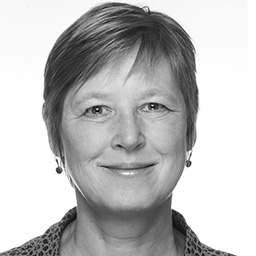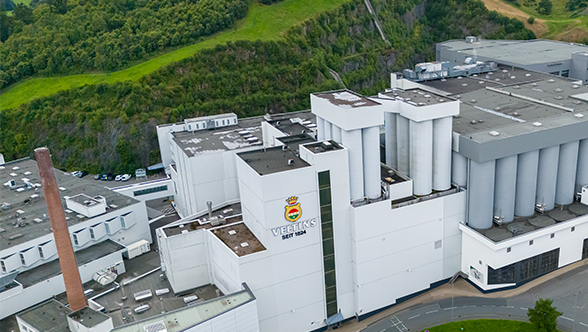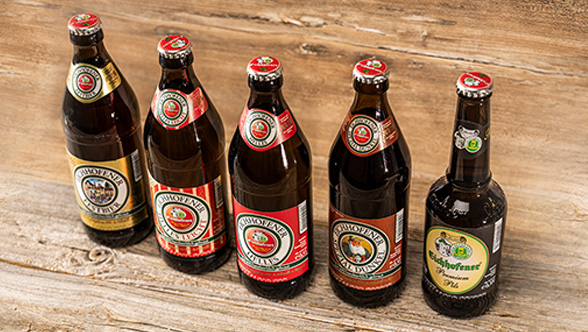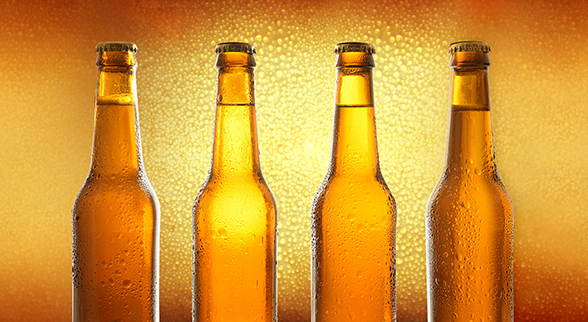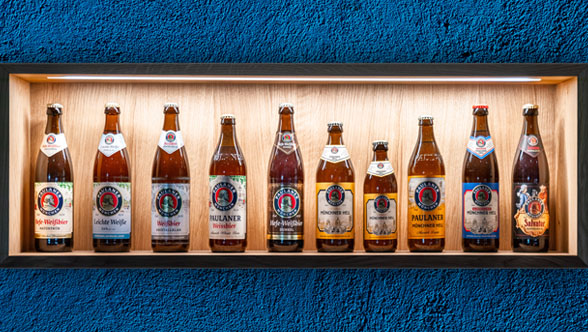Krones has developed a new fill level control system for the Dynafill based on artificial intelligence (AI). Until now, operating personnel have manually adjusted the filler bowl pressure – the parameter which determines the fill level. The new technology, by contrast, responds automatically to any changes in the process parameters and keeps the fill level continuously at the setpoint value. That results in less work for the staff and fewer rejects, and prevents machine stops caused by unnoticed changes. The system has been field-tested and is currently in use by a major customer.
The Dynafill’s latest improvement is a system for fill level control which features an integrated AI model. It ensures consistently high fill quality and reduces not only the number of machine stops and rejects, but also the operators’ workload. And the technology makes for greater resource-economy in beverage filling.
Bowl pressure determines fill level
The new solution targets the Dynafill’s fill level adjustment. The machine fills and closes bottles within a mere five seconds. To achieve this, it boasts a number of unique features, including a special vacuum filling process in which the containers are first flushed with CO₂ and then evacuated until only a minimum of residual gas remains. That creates a pressure gradient between the container and filler bowl, causing the product to be “sucked” into the bottle in just about half a second. Filling stops as soon as the pressures in the bowl and in the container reach the same level. The bowl pressure determines the degree of compression (low or high) for the gas above the liquid. As a result, the product volume filled into the bottle varies. That is why the bowl pressure determines the fill level in the Dynafill. In order to meet the quality specifications for the product, precise pressure is required in each case. And achieving such precision sometimes represents a real challenge.
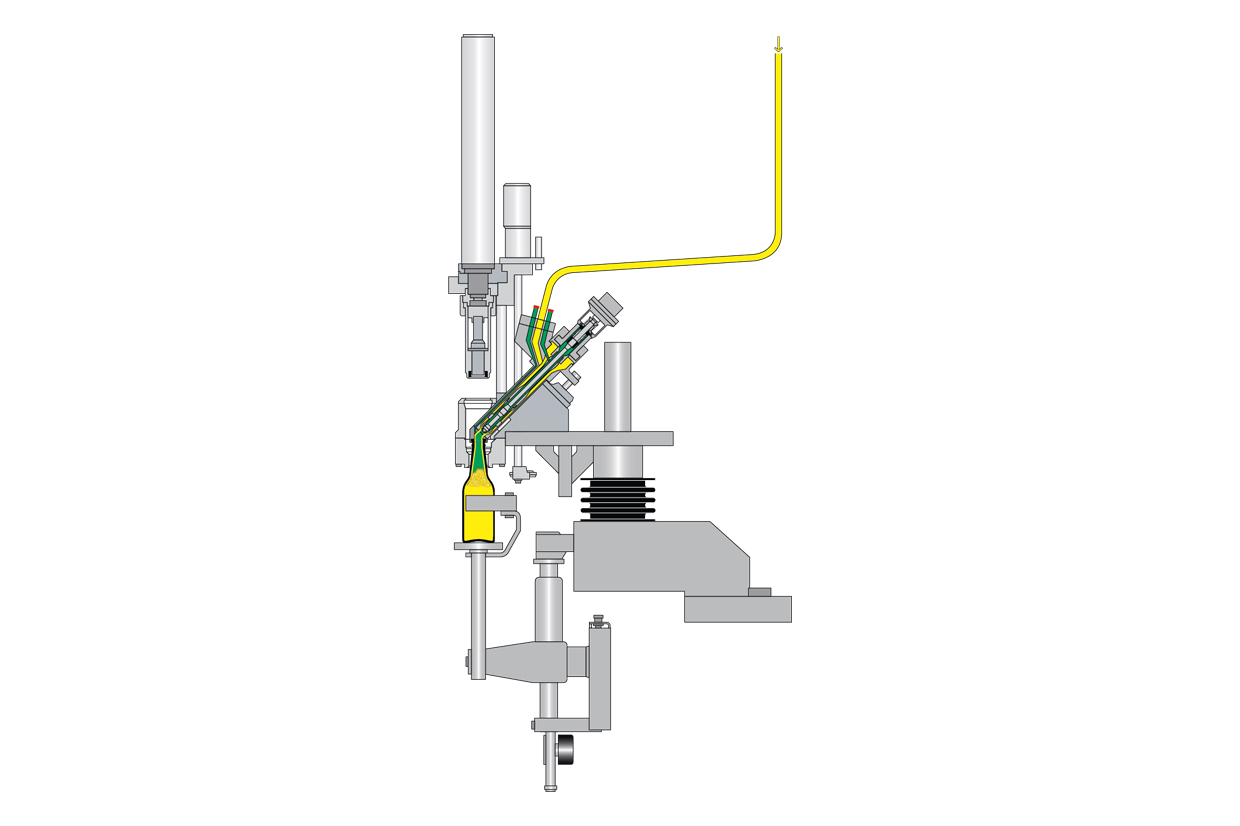
A whole series of parameters influence the interaction of fill level and bowl pressure. As these are subject to continual change during the filling process, the pressure must be dynamically re-adjusted. The product’s CO₂ content, temperature and the vacuum pressure in the bottle have the biggest effect. Even the smallest deviations in these filling parameters will affect the pressure equilibrium. In certain situations, manual adjustment requires the operator’s full attention. If the line stops, for example, the product stays in the tank for longer, and its temperature will rise. The operating staff must adjust the bowl pressure to allow for that and re-adjust when the product has returned to standard temperature. The situation is even more complicated at line start-up, as Christian Bockisch, the filler expert at Krones in charge of the Dynafill development project, explains: “At start-up, the product temperature changes rapidly, and the pressure must continually be re-adjusted by hand with the requisite precision and speed. That is well-nigh impossible for human operators.”
Machine learning recognises complex interrelations
“Up till now, implementation tables containing the appropriate pressure setpoint values for different temperature curves have been stored in the filler’s control system. The relevant measurements must be taken and a table created for every new product,” explains Christian Bockisch. His colleague Dr. Marinus Bommer, data scientist and machine learning expert in Krones’ AI team, points out why fill level adjustment is an ideal candidate for a machine learning model: “We have the pressure as the parameter to be set, and we have the fill level as a result. This result can be compared to the setpoint value because the Checkmat inspector records the fill level for every bottle. We can use these two parameters to establish a closed control loop between machine setting and result.” Moreover, the large number of parameters influencing the filling process pose a complex, multi-facetted problem which is easier and more convenient to identify and describe with an AI model. Therefore, the solution also offers greater flexibility when introducing new products.
The AI model maps all factors affecting the fill level and uses them to find optimum solutions to complex situations, something that is often impossible in systems without AI.
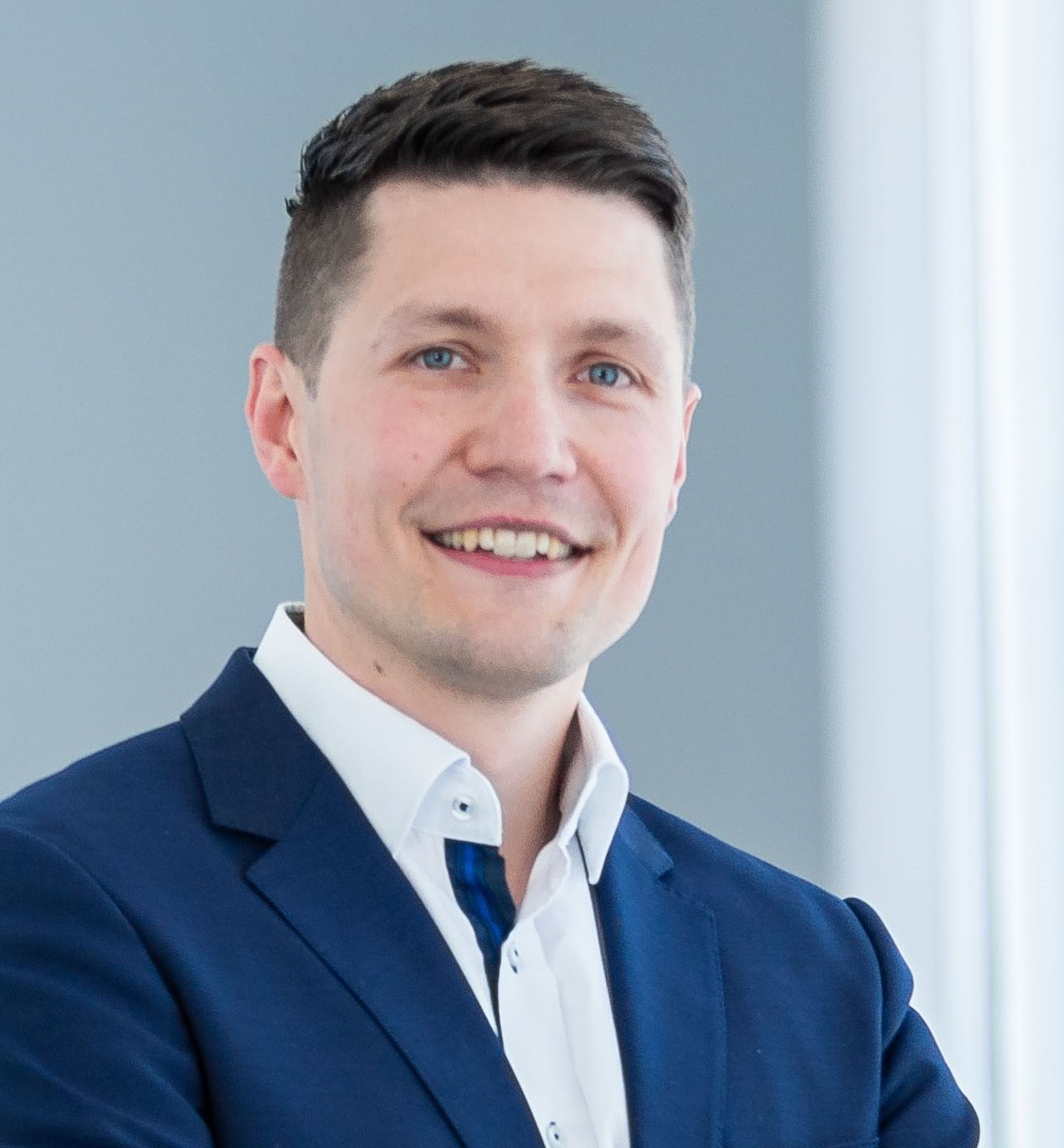 Christian BockischManager of the Dynafill development project at Krones
Christian BockischManager of the Dynafill development project at Krones
The measurements taken at the sensors for temperature, for the product’s CO₂ content and for the vacuum pressure inside the container serve as input variables for the model, which sets a bowl pressure and uses the differential between fill level measured and setpoint value to train the appropriate pressure setting for every configuration. “In this way, the model can map all factors affecting the fill level, even unknown influences. That’s why it’s able to find optimum solutions to complex situations, something that is often impossible in traditional systems without AI,” emphasises Christian Bockisch. Once it has been trained, the model responds automatically to any deviations in the filling conditions and adjusts the bowl pressure to make sure that the fill level is always kept at the setpoint value. It is thus able to detect even minute process deviations in next to no time. More often than not, such changes would otherwise not be noticed until rejects drew the operator’s attention or the machine stopped. Conventional control systems would only respond when the fill level monitor indicated a fault. This takes just a few seconds, but in that short time the product temperature may already have changed again, at start-up for example. The AI-based solution can be relied on to prevent such fill level errors altogether.
AI-based shopfloor solution
The machine learning model is installed on the line’s edge device, the Krones ReadyKit. The model uses the measurements taken at the sensors for temperature, for the product’s CO₂ content and for the vacuum pressure inside the container, plus the setpoint/actual comparison for the fill level, to calculate the required filling pressure. It then transmits this value to the Dynafill’s control system. The filler is supplied with a dedicated initial model for the product planned that is selected by experienced members in the Krones AI team. When the line is started up with this product, the initial model is then trained in the cloud on Krones’ IIoT platform. All of the data necessary for training the model – measurements taken at the sensors for all filling conditions and the Checkmat’s fill level camera data – are transmitted from the line to ReadyKit, and from there into the cloud. Depending on the rate of production, training may take anything from a few days up to a few weeks. The resulting model is downloaded to ReadyKit, after which it works in the machine network irrespective of the quality of the internet link. The internet link is required only for uploading data and for model and software updates.
A separate model is stored in ReadyKit for each product. The filler’s control system selects the appropriate model at each product change-over. “We’ve got a Dynafill with AI system currently in use that fills about ten different products,” says Marinus Bommer. When a new product is added, the AI team at Krones selects a further initial model and trains it in the cloud. The Krones service team which sets the machine up for the new product on site does not need any special expertise. Since the model is stored in the edge device, it is not necessary to update the filler’s control system from a data carrier. Instead, the AI team uploads the new model to the customer’s ReadyKit from Neutraubling. Training begins when the filler is started up. “My colleague on site and I had scheduled half an hour for the most recent new product set-up at the filler – but after 15 minutes it was already available in the fill level control system,” says Bommer.
My colleague on site and I had scheduled half an hour for the most recent new product set-up at the filler – but after 15 minutes it was already available in the fill level control system.
 Dr. Marinus BommerData scientist in Krones’ AI team
Dr. Marinus BommerData scientist in Krones’ AI team
Benefits at a glance
As Christian Bockisch points out, AI-based fill level control constitutes a milestone not only for the beverage industry: “In a business-to-business environment, that sort of practice-driven AI is actually quite unique. Control systems featuring machine learning models are not yet in widespread use here.”
The new technology offers beverage producers gains in efficiency, productivity and sustainability. The control system effectively sets the target fill level with the requisite precision, thus ensuring consistently high levels of fill quality. That reduces the workload for the operators, who frequently have to look after a number of machines simultaneously. This means they are not always in the right place to respond swiftly to any problems which crop up. The new control system frees them to concentrate on other tasks. All in all, it minimises the need for manual intervention and makes it possible to work with the Dynafill even without special expertise in use of the machine.
What’s more, the consistently high fill quality also reduces the reject rate and thus the plant’s material consumption. In this way, AI-based control saves both energy and resources and helps beverage producers achieve their sustainability and efficiency targets.
